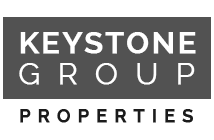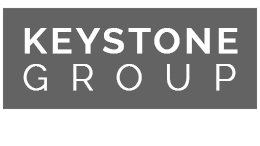For interest in So California luxury real estate in Los Angeles County, as well as coastal Orange County homes and San Diego homes, call Bob Cumming of Keystone Group Properties at 310-496-8122. Keystone Group Properties serves the discerning buyer and sellers of high-end CA real estate, including La Jolla real estate and properties from Newport Beach, Dana Point and Laguna Beach to Palos Verdes and Palos Verdes Estates, Mission Viejo, Redondo Beach, Santa Monica, and Malibu. We also present exclusive Los Angeles CA homes in Beverly Hills, Bel Air, and Beverly Glen real estate.
Home Prices Continue to Rise in May 2012
According to the S&P/Case-Shiller Home Price Indices
New York, July 31, 2012 – Data through May 2012, released today by S&P Dow Jones Indices for its S&P/Case-Shiller1 Home Price Indices, the leading measure of U.S. home prices, showed that average home prices increased by 2.2% in May over April for both the 10- and 20-City Composites.
With May’s data, we found that home prices fell annually by 1.0% for the 10-City Composite and by 0.7% for the 20-City Composite versus May 2011. Both Composites and 17 of the 20 MSAs saw increases in annual returns in May compared to April. Boston, Charlotte and Detroit were the three cities that saw their annual returns worsen in May, with annual rates of -0.1%, +0.9% and +0.6%, respectively. Atlanta continues to be the only city posting a double-digit negative annual return with -14.5%. However, this is an improvement over the -17.0% annual decline recorded in April 2012. All 20 cities and both Composites posted positive monthly returns. No cities posted new lows in May 2012.
“With May’s data, we saw a continuing trend of rising home prices for the spring,” says David M. Blitzer, Chairman of the Index Committee at S&P Dow Jones Indices. “On a monthly basis, all 20 cities and both Composites posted positive returns and 17 of those cities saw those rates of change increase compared to what was observed for April. Seventeen of the 20 cities and both Composites also saw improved annual rates of return. We have observed two consecutive months of increasing home prices and overall improvements in monthly and annual returns; however, we need to remember that spring and early summer are seasonally strong buying months so this trend must continue throughout the summer and into the fall.
“The 10- and 20-City Composites were each up 2.2% for the month and recorded respective annual rates of decline of 1.0% and 0.7%, compared to May 2011. While still negative, these annual changes are the best we’ve since in at least 18 months.
“Taking a closer look at the cities, Phoenix again posted the best annual return. Average home prices in that region were up 11.5% versus May 2011. It was one of the hardest hit cities in the collapse, and prices are still more than 50% below their June 2006 peak, but the past five months have been positive for that market. Miami and Tampa are two other Sunbelt cities that were hard-hit in the downturn, but are now showing positive annual rates of change. Boston, Charlotte and Detroit, on the other hand, saw their annual rates of return deteriorate compared to April, even though prices rose over the month of May. Las Vegas posted both a positive monthly change in May and saw an improvement in its annual return; that said, the market is still more than 60% below it August 2006 peak.
“June data for existing home sales, new home sales, housing starts and mortgage default rates were a bit mixed, but all are better than their year-ago levels. The housing market seems to be stabilizing, but we are definitely in a wait-and-see mode for the next few months.”
Measured from their June/July 2006 peaks through May 2012, the decline for both Composites is approximately 33%. The 10-City Composite recently reached its low in the current housing cycle in March 2012 and the 20-City in February 2012; at that time both Composites were down approximately 35% from their summer 2006 peaks.
In May 2012, we observed all 20 MSAs and both Composites posting positive monthly returns. Atlanta, again, was the only city to post a double-digit negative annual rate of return of 14.5%; however it saw improvements in both monthly and annual rates versus what was published for April. Phoenix posted the highest annual rate of growth amongst all 20 cities at +11.5%, an improvement over the +8.6% annual return recorded in April. Chicago fared the best in terms of monthly returns with a 4.5% increase in home prices as compared to April. Atlanta, Cleveland, Detroit and Las Vegas continue to have average home prices below their January 2000 levels.
The table below summarizes the results for May 2012. The S&P/Case-Shiller Home Price Indices are revised for the 24 prior months, based on the receipt of additional source data. More than 25 years of history for these data series is available, and can be accessed in full by going to www.homeprice.standardandpoors.com.
Since its launch in early 2006, the S&P/Case-ShillerHome Price Indices have published, and the markets have followed and reported on, the non-seasonally adjusted data set used in the headline indices. For analytical purposes, S&P Dow Jones Indices publishes a seasonally adjusted data set covered in the headline indices, as well as for the 17 of 20 markets with tiered price indices and the five condo markets that are tracked.
About S&P Dow Jones Indices
S&P Dow Jones Indices LLC, a subsidiary of The McGraw-Hill Companies is the world’s largest, global resource for index-based concepts, data and research. Home to iconic financial market indicators, such as the S&P 500® and the Dow Jones Industrial AverageSM, S&P Dow Jones Indices LLC has over 115 years of experience constructing innovative and transparent solutions that fulfill the needs of institutional and retail investors. More assets are invested in products based upon our indices than any other provider in the world. With over 830,000 indices covering a wide range of assets classes across the globe, S&P Dow Jones Indices LLC defines the way investors measure and trade the markets. To learn more about our company, please visit www.spdji.com.
It is not possible to invest directly in an index. S&P Dow Jones Indices LLC, Dow Jones, and their respective affiliates, parents, subsidiaries, directors, officers, shareholders, employees and agents (collectively “S&P Dow Jones Indices”) does not sponsor, endorse, sell, or promote any investment fund or other vehicle that is offered by third parties and that seeks to provide an investment return based on the returns of any S&P Dow Jones Indices index. This document does not constitute an offer of services in jurisdictions where S&P Dow Jones Indices or its affiliates do not have the necessary licenses. S&P Dow Jones Indices receives compensation in connection with licensing its indices to third parties.
La Jolla real estate for sale


